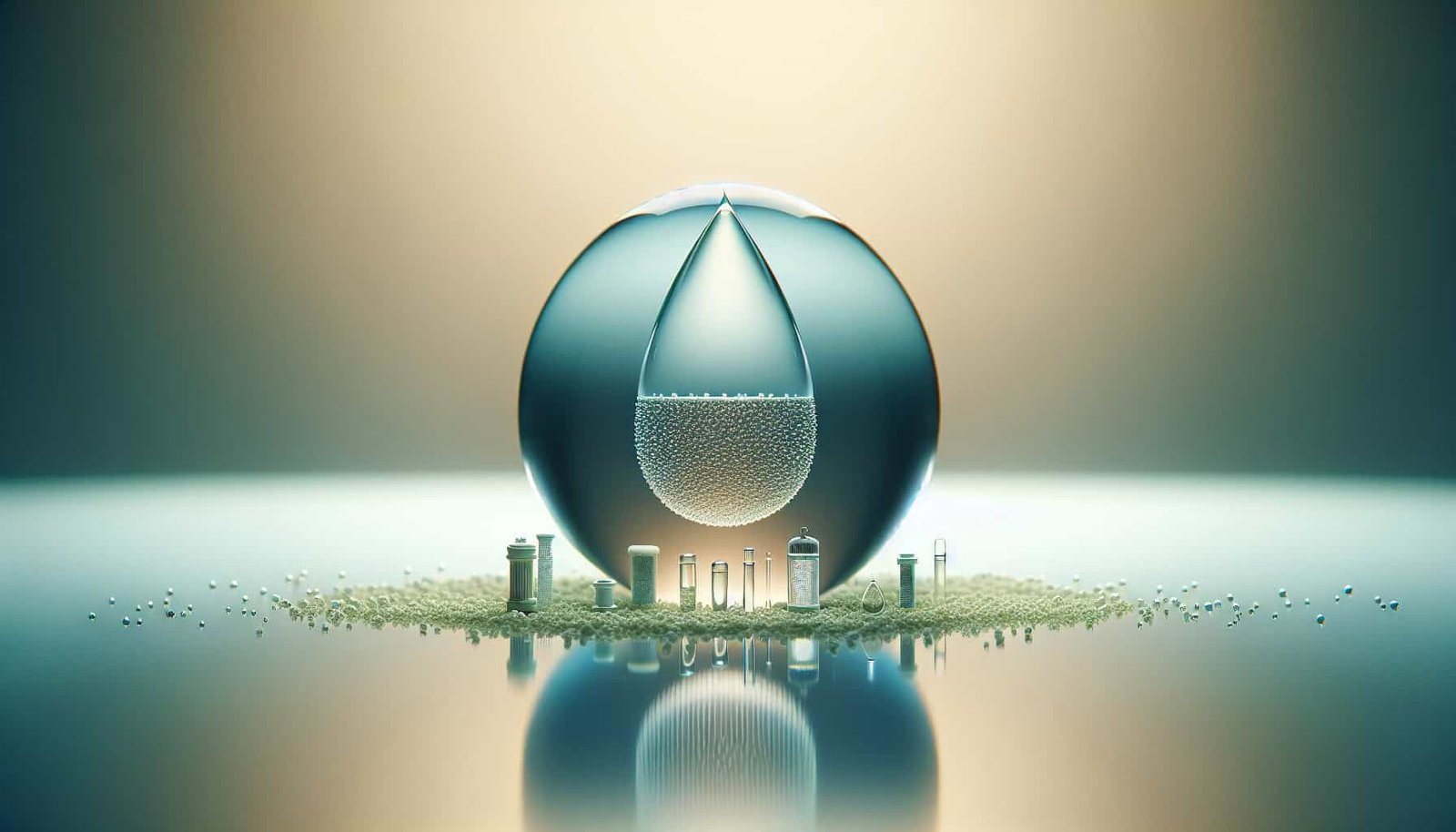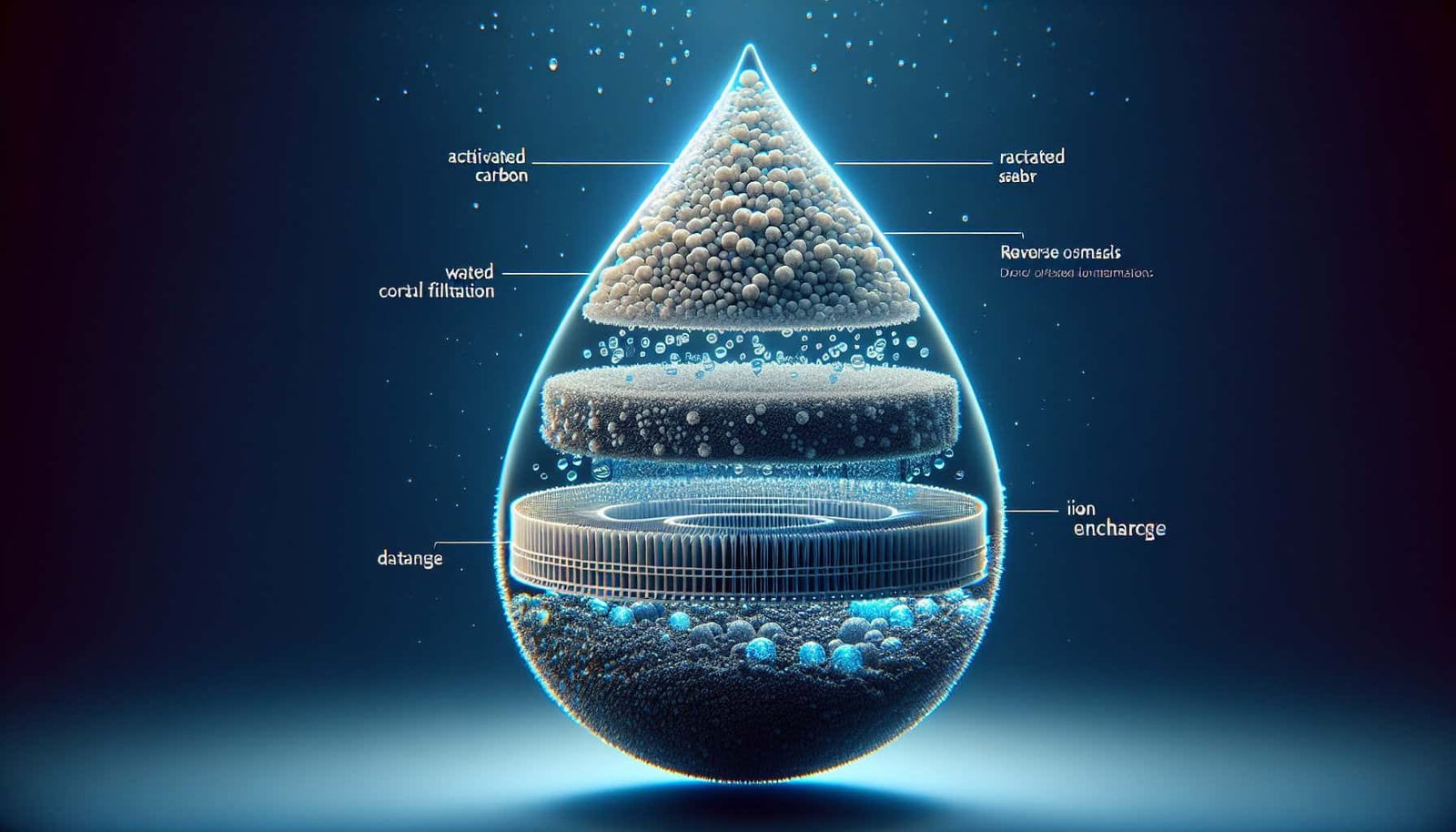Are you concerned about the quality of your well water? If you have high levels of acrylamide in your well water, it’s important to find effective treatment methods. In this article, we will explore various treatment methods that can help reduce the levels of acrylamide in your well water, ensuring you and your family have access to clean and safe drinking water. So, let’s dive in and discover the best solutions for your well water!
Overview of Acrylamide Contamination in Well Water
Acrylamide is a chemical compound that can contaminate well water and pose potential health risks. Understanding the sources of acrylamide in well water is crucial for implementing effective treatment methods and ensuring the safety of drinking water.
Understanding Acrylamide
Acrylamide is a synthetic compound that is commonly used in industrial processes such as the production of plastics, dyes, and paper. It is also a byproduct of the cooking process, particularly in foods that are high in starch and undergo high-temperature cooking methods such as frying and baking.
Sources of Acrylamide in Well Water
Acrylamide contamination in well water can occur due to various sources. One significant source is the seepage of acrylamide-containing wastewater into the ground. Industries that produce or use acrylamide may discharge wastewater either deliberately or unintentionally, which can infiltrate into the groundwater and contaminate nearby wells. Additionally, agricultural activities that involve acrylamide-based pesticides can contribute to contamination if not properly managed.
Potential Health Effects of Acrylamide
Acrylamide has been classified as a probable human carcinogen by the International Agency for Research on Cancer (IARC). Prolonged exposure to high levels of acrylamide has been linked to an increased risk of certain types of cancer, including kidney, bladder, and ovarian cancer. In addition to its carcinogenicity, acrylamide exposure has been associated with other health risks such as neurological and reproductive effects.

Carcinogenicity of Acrylamide
A significant concern regarding the presence of acrylamide in well water is its potential to cause cancer. Studies have demonstrated that acrylamide has carcinogenic properties in both animals and humans. It forms DNA adducts, which are compounds that can damage genetic material and potentially initiate the development of cancerous cells.
Other Health Risks Associated with Acrylamide
In addition to its carcinogenic effects, acrylamide exposure can also lead to other health risks. Neurological effects, such as peripheral neuropathy and impaired cognitive functions, have been observed in individuals exposed to high levels of acrylamide over a prolonged period. Furthermore, reproductive effects, including reduced fertility and developmental abnormalities in offspring, have been associated with acrylamide exposure.
Testing and Monitoring Acrylamide Levels in Well Water
To ensure the safety of well water, regular testing and monitoring of acrylamide levels are essential. Various sampling and analysis methods are available to measure the concentration of acrylamide in water samples accurately. This information is crucial for determining the effectiveness of treatment methods and ensuring compliance with federal and state regulations.
Sampling and Analysis Methods
Sampling methods for acrylamide typically involve collecting water samples from wells and analyzing them for acrylamide content. Commonly used techniques include solid-phase extraction and high-performance liquid chromatography. These methods allow for the accurate quantification of acrylamide levels in well water samples.

Federal and State Regulations
To protect public health, federal and state regulations have been established to set limits on the concentration of acrylamide in drinking water. These regulations aim to ensure that well water meets specific quality standards and does not pose a significant risk to consumers. Monitoring and compliance with these regulations are crucial for maintaining the safety and quality of well water.
Removal Techniques for Acrylamide in Well Water
If acrylamide contamination is detected in well water, several treatment methods can be employed to remove or reduce its concentration. The selection of a suitable treatment technique depends on the specific characteristics of the water source and the desired level of acrylamide removal.
Activated Carbon Filtration
Activated carbon filtration is a commonly used treatment method for removing acrylamide from well water. This process involves passing the water through activated carbon filters, which have a high affinity for organic compounds like acrylamide. The activated carbon traps and adsorbs the acrylamide molecules, effectively removing them from the water.
Reverse Osmosis
Reverse osmosis is another effective technique for acrylamide removal. This process utilizes a semipermeable membrane to separate contaminants from the water. Reverse osmosis is particularly effective in removing acrylamide and other organic compounds that have larger molecular sizes.

Ultrafiltration
Ultrafiltration is a membrane-based treatment method that operates on the principle of size exclusion. It removes acrylamide by passing the water through a membrane with a specific pore size that effectively blocks its passage. Ultrafiltration is often used as a pre-treatment step in combination with other techniques to remove larger particles and contaminants.
Electrocoagulation
Electrocoagulation is an electrochemical treatment method that uses electrodes to induce coagulation and flocculation of contaminants, including acrylamide. Charged particles in the water are destabilized and form aggregates, which can then be easily separated through filtration or sedimentation processes. Electrocoagulation offers an efficient and environmentally friendly approach to acrylamide removal.
Adsorption Processes for Acrylamide Removal
Adsorption processes can effectively remove acrylamide from well water by attracting and retaining the contaminant on a solid surface. Two common adsorption methods used for acrylamide removal are activated carbon adsorption and biological activated carbon adsorption.
Activated Carbon Adsorption
Activated carbon adsorption is widely used in water treatment due to its high adsorption capacity. It involves the use of activated carbon, which has a large surface area and high porosity, allowing it to adsorb and retain acrylamide molecules. The activated carbon can be regenerated and reused, making it a cost-effective treatment option.

Biological Activated Carbon Adsorption
Biological activated carbon (BAC) adsorption utilizes a combination of activated carbon and microorganisms to remove acrylamide from well water. The microorganisms present in the BAC system degrade the acrylamide, converting it into less harmful substances. This process offers long-term, sustainable acrylamide removal without the need for frequent carbon replacement.
Membrane-Based Treatment Methods for Acrylamide Removal
Membrane-based treatment methods, such as reverse osmosis and ultrafiltration, can effectively remove acrylamide from well water. These processes rely on the use of semipermeable membranes to separate contaminants based on their size and molecular weight.
Reverse Osmosis Process
Reverse osmosis utilizes a membrane with tiny pores to remove acrylamide and other contaminants from water. The pressure applied to the water forces it through the membrane, while the acrylamide and other substances are left behind. The purified water is collected on one side of the membrane, while the concentrated contaminants are discharged.
Ultrafiltration Process
Ultrafiltration employs a membrane with larger pore sizes compared to reverse osmosis. This allows for the removal of larger particles, including acrylamide, while retaining essential minerals and salts in the water. Ultrafiltration is often used as a pre-treatment step before other purification processes to remove suspended solids, colloids, and macromolecules.

Chemical Precipitation Method for Acrylamide Removal
Chemical precipitation is a treatment method that uses chemical additives to induce the formation of insoluble particles, which can then be separated from the water. Coagulation-flocculation treatment is a commonly used precipitation method for acrylamide removal.
Coagulation-Flocculation Treatment
Coagulation-flocculation treatment involves the addition of coagulants to the water, which cause the formation of large, sticky particles called flocs. These flocs effectively bind with acrylamide and other contaminants, allowing them to settle or float to the surface. The water can then be separated from the flocs using sedimentation or flotation processes.
Advanced Oxidation Processes in Acrylamide Treatment
Advanced oxidation processes (AOPs) utilize powerful oxidizing agents to degrade acrylamide and other organic compounds in water. Two commonly used AOPs for acrylamide treatment are ozonation and ultraviolet (UV) radiation treatment.
Ozonation
Ozonation involves the use of ozone, a strong oxidizing agent, to break down acrylamide molecules into simpler and less toxic compounds. Ozone gas is introduced into the water, where it reacts with acrylamide and destroys its chemical structure. Ozonation can effectively remove acrylamide and other organic contaminants, improving the overall quality of well water.
Ultraviolet (UV) Radiation Treatment
UV radiation treatment utilizes UV light to degrade acrylamide and other organic compounds. The high-energy UV light damages the chemical bonds of acrylamide, leading to its transformation into less harmful substances. UV treatment is often combined with other oxidation processes to enhance its effectiveness in acrylamide removal.
Biological Treatment Methods for Acrylamide Removal
Biological treatment methods utilize microorganisms to break down acrylamide and convert it into less toxic substances. Two commonly used biological treatment methods for acrylamide removal are biodegradation and the activated sludge process.
Biodegradation of Acrylamide
Biodegradation involves the use of microorganisms, such as bacteria and fungi, to metabolize acrylamide and break it down into simpler compounds. These microorganisms have the ability to utilize acrylamide as a source of carbon and degrade it through enzymatic reactions. Biodegradation offers a natural and sustainable approach to acrylamide removal.
Activated Sludge Process
The activated sludge process is a biological treatment method that utilizes a mixture of microorganisms to remove organic compounds from water. Acrylamide can be effectively removed through the interaction between the acrylamide-degrading microorganisms and the contaminated water. The activated sludge process is widely implemented in wastewater treatment plants but can also be adapted for acrylamide removal in well water.
Emerging Technologies for Acrylamide Removal
Continuous research and development have led to the emergence of new technologies for acrylamide removal in well water. These technologies offer added efficiency and effectiveness in addressing high levels of acrylamide contamination.
Nanoparticle-Based Treatment
Nanoparticle-based treatment methods utilize nanomaterials with active surfaces to adsorb and remove acrylamide from water. These nanoparticles have a high surface area, allowing for enhanced adsorption capacity and more efficient acrylamide removal. Nanoparticle-based treatments show promising potential in effectively tackling acrylamide contamination in well water.
Electrochemical Methods
Electrochemical methods involve the use of electrodes to generate reactive species and facilitate the degradation of acrylamide in water. Electrochemical oxidation and electro-Fenton processes utilize electrochemical reactions to break down acrylamide into harmless byproducts. These methods offer potential for high efficiency and cost-effectiveness in acrylamide removal.
In conclusion, the presence of acrylamide in well water can pose significant health risks. Understanding the sources and potential health effects of acrylamide contamination is crucial for implementing effective treatment methods. Through testing, monitoring, and the use of various removal techniques such as activated carbon filtration, reverse osmosis, and advanced oxidation processes, it is possible to remove or reduce acrylamide levels in well water and ensure the provision of safe drinking water for all. Additionally, emerging technologies such as nanoparticle-based treatments and electrochemical methods provide promising avenues for further improvements in acrylamide removal efficiency. By implementing these comprehensive treatment approaches, we can safeguard our well water resources and protect the health and well-being of individuals consuming this vital resource.

